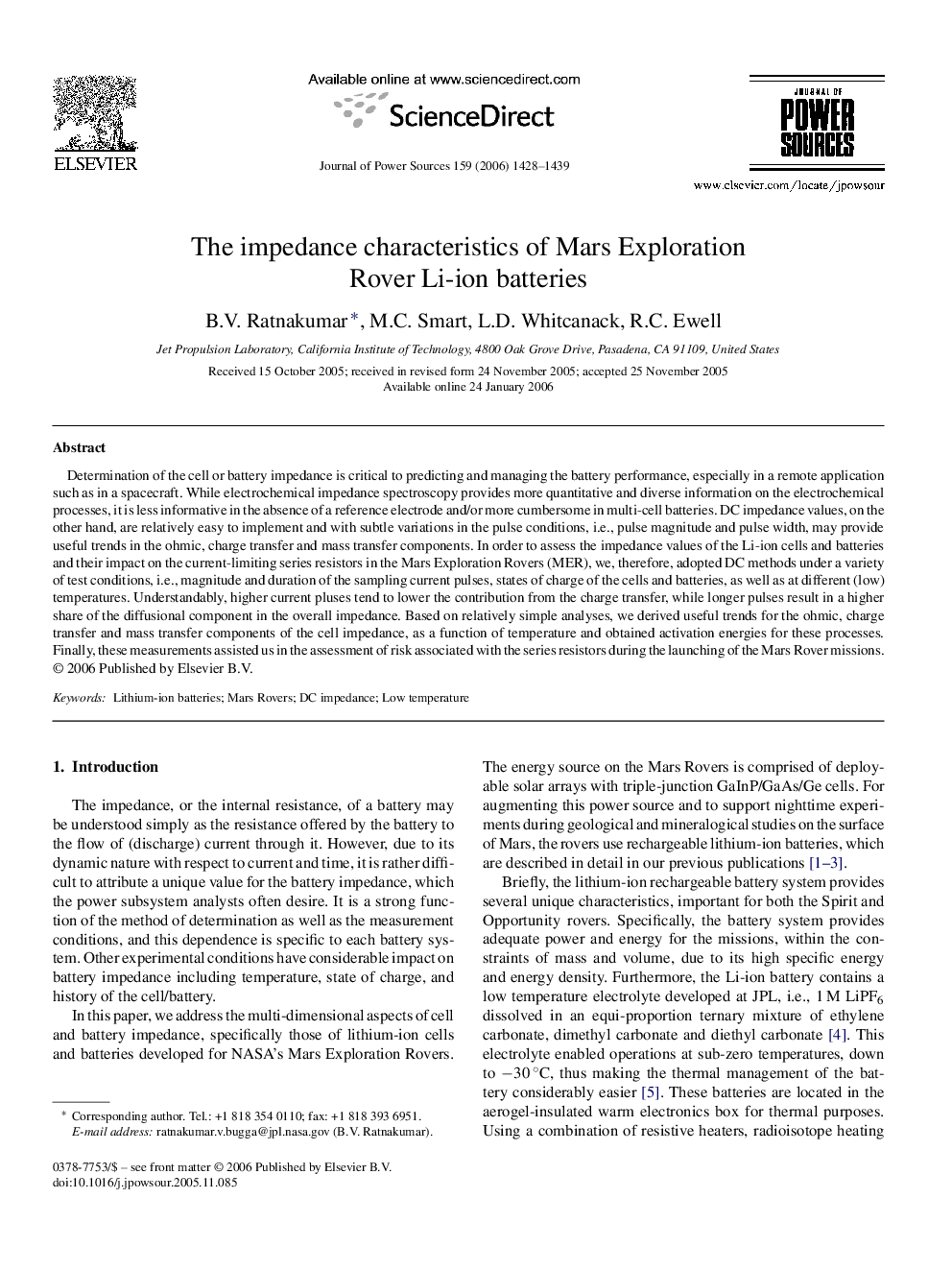| Article ID | Journal | Published Year | Pages | File Type |
|---|---|---|---|---|
| 1287310 | Journal of Power Sources | 2006 | 12 Pages |
Determination of the cell or battery impedance is critical to predicting and managing the battery performance, especially in a remote application such as in a spacecraft. While electrochemical impedance spectroscopy provides more quantitative and diverse information on the electrochemical processes, it is less informative in the absence of a reference electrode and/or more cumbersome in multi-cell batteries. DC impedance values, on the other hand, are relatively easy to implement and with subtle variations in the pulse conditions, i.e., pulse magnitude and pulse width, may provide useful trends in the ohmic, charge transfer and mass transfer components. In order to assess the impedance values of the Li-ion cells and batteries and their impact on the current-limiting series resistors in the Mars Exploration Rovers (MER), we, therefore, adopted DC methods under a variety of test conditions, i.e., magnitude and duration of the sampling current pulses, states of charge of the cells and batteries, as well as at different (low) temperatures. Understandably, higher current pluses tend to lower the contribution from the charge transfer, while longer pulses result in a higher share of the diffusional component in the overall impedance. Based on relatively simple analyses, we derived useful trends for the ohmic, charge transfer and mass transfer components of the cell impedance, as a function of temperature and obtained activation energies for these processes. Finally, these measurements assisted us in the assessment of risk associated with the series resistors during the launching of the Mars Rover missions.
